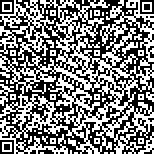| 摘要: |
| [摘要] 目的 探讨肝脏血管周围晕征(PVL)的MRI表现及其临床意义。方法 收集2015-01~2016-06该院68例肝脏PVL患者的MRI及临床资料,总结其MRI影像表现、病理基础及疾病类型。结果 PVL表现为门静脉主干及其各级分支周围长T1长T2信号,呈“轨道征”或“晕环征”改变,部分合并有胆囊壁水肿、肝外淋巴管扩张及淋巴结增大。68例PVL中,位于门静脉主干及左右支周围者46例(67.6%);位于门静脉中远段周围者12例(17.6%);同时存在以上两种征象者10例(14.7%)。疾病类型中,57例有不同程度肝功能损害,其中活动性肝炎18例,肝硬化20例,肝硬化并肝癌13例,药物性肝损害5例,系统性红斑狼疮并肝损害1例;肾功能损害4例;心功能损害7例。结论 肝脏PVL的MRI表现及分布具有一定的特征性,其病理基础为淋巴管扩张水肿,是肝小叶结构与功能改变的间接反映。 |
| 关键词: 血管周围晕征 磁共振成像 肝功能损害 淋巴管 |
| DOI:10.3969/j.issn.1674-3806.2017.05.19 |
| 分类号:R 445 |
| 基金项目: |
|
| MRI findings of liver perivascular lucency and its clinical significances |
|
LIANG Yong-qin, LI Ying-yi, YANG Wei-zhen, et al
|
|
Department of Radiology, the People′s Hospital of Wuzhou City, Guangxi 543000, China
|
| Abstract: |
| [Abstract] Objective To investigate the MRI manifestations and clinical significances of liver perivascular lucency(PVL).Methods The clinical data of 68 patients with PVL from January 2015 to June 2016 were retrospectively analyzed. The results of magnetic resonance imaging(MRI) findings, pathology and types of disease were summarized.Results PVL showed that the changes of the main branches of the portal vein and its branches around the long T1 long T2 signals were “track sign” or “halo ring sign”, some of which had mergers with the gallbladder wall edema, extrahepatic lymph duct expansion and lymph node enlargement. Of the 68 cases with PVL, 46 cases(67.6%) had PVL which was around the main portal vein and the left and right branches area; 12 cases(17.6%) had PVL which was around the middle and distal parts of portal vein; 10 other cases(14.7%) had both track sign and halo ring sign. In the types of illnesses, 57 cases had different degrees of liver function damage, including active hepatitis in 18 cases, cirrhosis in 20 cases, cirrhosis and liver cancer in 13 cases, drug induced liver damage in 5 cases, systemic lupus erythematosus and liver damage in 1 case, renal function damage in 4 cases, and cardiac function damage in 7 cases.Conclusion The MRI findings and distribution of liver PVL have a certain characteristic, and the pathological basis is lymphangiectasis which is the indirect reflection of the structure and function of the liver. |
| Key words: Perivascular lucency Magnetic resonance imaging Liver function damage Lymphatic vessels |

